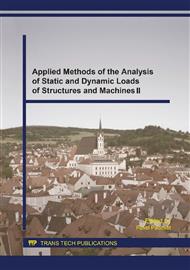p.137
p.141
p.145
p.149
p.157
p.161
p.169
p.173
p.177
Experimental Analysis and Study of the Shock Absorption of Carbon Composite
Abstract:
Composite materials are a regular part of many industries - aerospace, automotive, mechanical engineering. Lower weight and comparable in some ways even better mechanical properties, are the reason why composites progressively substitute traditional metal based material. The article describes the design of composite tub with metal reinforcement. Compares the theoretical and real output of sample produced from CF prepreg specially designed for absorbing the energy during crash impact. The results show that the sample due to its deformation is able to absorb some energy and become a material usable in structural applications.
Info:
Periodical:
Pages:
157-160
Citation:
Online since:
February 2016
Authors:
Keywords:
Price:
Сopyright:
© 2016 Trans Tech Publications Ltd. All Rights Reserved
Share:
Citation:


